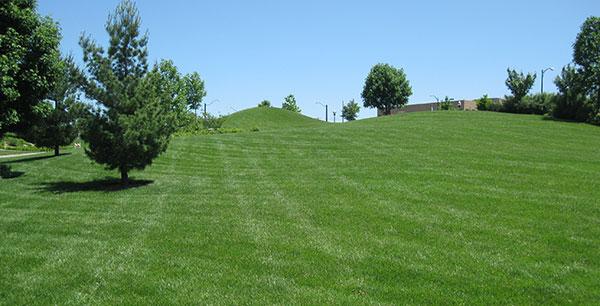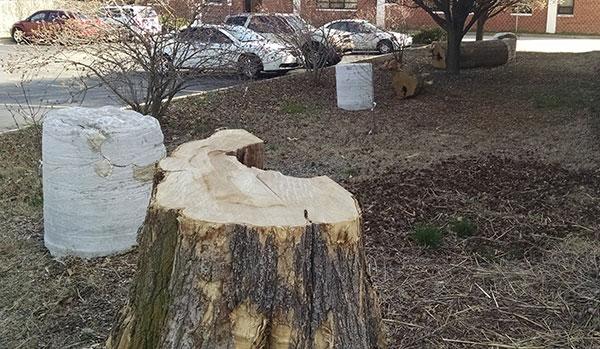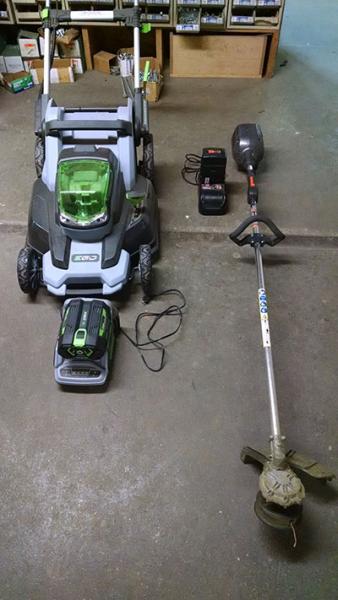Random thoughts on sustainability
Writing my last blog about the future of grounds and landscape management got me thinking about how potential changes could alter my current programs. It then lead me to wonder about sustainability (what in the world does that mean?), and how that could change my grounds management too. As I pondered these questions, I began to wonder what steps are to achieve the sustainability goals I believe in and support. In no particular order, and without saying that these are the absolute answers, here are some of the steps I am taking to improve my sustainability.
First, define 'sustainability'
Sustainability is everywhere these days and everybody says they and their products are sustainable. The most common definition is based on Norwegian Prime Minister Bruntland's statement of "meeting the needs of the present without compromising the needs of the future". As I have pursued what I think sustainability is, I have come to a definition that I think gets to a better heart of the matter. I use the sustain root of the word and ask myself this question: If I walk away (stop managing my landscape) will it sustain, or keep doing what I want it to? This question pursues a zero-resource approach rather than the low resource approach of sustainability (postpone-ability). A self-perpetuating landscape? Impossible, maybe. Pursuable, definitely.
Higher mowing heights
I imagine this is nothing new to most of you. Generally speaking, raising the height of cut helps durability, decreases weed pressure, and shades the soil. But if you go by the rule of thirds (removing no more than 1/3 of blade each mowing), it also decreases frequency of mowing. Here at Drury University we cut most of our turf (TT Tall Fescue) at 3.5 inches. We have a couple of areas that we mow at 4". If we add ¼ to ½ inch height, we can potentially eliminate 2-3 mowings per year.

Mowing higher also increases leaf mass which increases the ability of the turf to filter pollutants and moderate the flow of heavy precipitation. If we add leaf mass for the 35 acres we mow, that adds a lot of benefit for our campus.
Another aspect I wonder about is the ability to first drive roots deeper, then as the roots senesce, they add organic matter and leave channels in the soil, thus improving soil quality. I may experiment with cutting some areas at 6 inches or higher, and see what happens.
Promote plant and insect diversity
I have been in grounds management for almost 25 years and have never treated, in any way at all, for grubs in my turf. I think this is significant. Grub control and the associated concern about Japanese Beetles is very common. I believe that my cultural practices of almost no chemicals, and organic fertilizer go a long way in diminishing grub pressure. I suggest that the array of harsh fertilizers and pesticides we use on our turf creates an environment that grubs thrive in. All the additives cannot help but have some collateral effect on beneficial organisms. When this occurs, there is less competition and fewer predators. Opportunistic insects such as grubs can get out of hand when this occurs and pass treatment thresholds. I certainly have grubs. I see them when I plant or dig through the sod. But I know I do not have enough to worry about. The proof is in the turf that I cultivate. It looks fine and is healthy enough.
Promote all life cycles
As soon as something dies in the landscape, we remove it. This does not occur in any natural ecosystems. Dead organisms and organic matter are consumed in one way or another, either decomposed or eaten. How many organisms in our landscapes could benefit from decayed logs, or leaf litter?

There is an entire set of organisms that require dead matter to live. By incorporating small pockets of a variety of dead and decaying plant material, I may be supporting a keystone species in terms of landscape health. Considering that the vast majority of microorganisms in the soil are beneficial, I may actually be enhancing a critical microorganism also.
Support products that support a new paradigm
 The green industry has rolled out a lot of products in recent years promising sustainability. Many of these have proven to be "greenwashing" and no more sustainable than any other product. If I believe in some goal of sustainability, it is my responsibility to run my operation that way, and to utilize products I think support that goal.
The green industry has rolled out a lot of products in recent years promising sustainability. Many of these have proven to be "greenwashing" and no more sustainable than any other product. If I believe in some goal of sustainability, it is my responsibility to run my operation that way, and to utilize products I think support that goal.
In recent years I have purchased and used horticultural vinegar and citric acid products as weed killer, new rotating heads and evapotranspiration monitors for irrigation, corn gluten and pelletized alfalfa as fertilizer and battery powered mowers/weed eaters. Not all of these products are as effective as their industrial strength cousins, but they have proven to be serviceable in many applications. By purchasing these, I am helping fund exploratory and experimental products, thereby helping fund improvement of the products. If no one buys them, they will stop moving in new directions.
Many possible answers
I don't have all the answers. I don't even have new answers. The situations individual managers find themselves in vary. What works for us at Drury University may not work at another operation, and all of us must have wiggle room in our programs.
Although I support low input turf maintenance, this spring I put down Tupersan with overseeding on our athletic fields and an event-focused turf space. Ultra high quality or special-application turf needs an entirely different regime. But with the changes that will be forthcoming, I try to do as much of what I want to do, so no one tells me what I have to do.



2 Comments
Recommended Comments